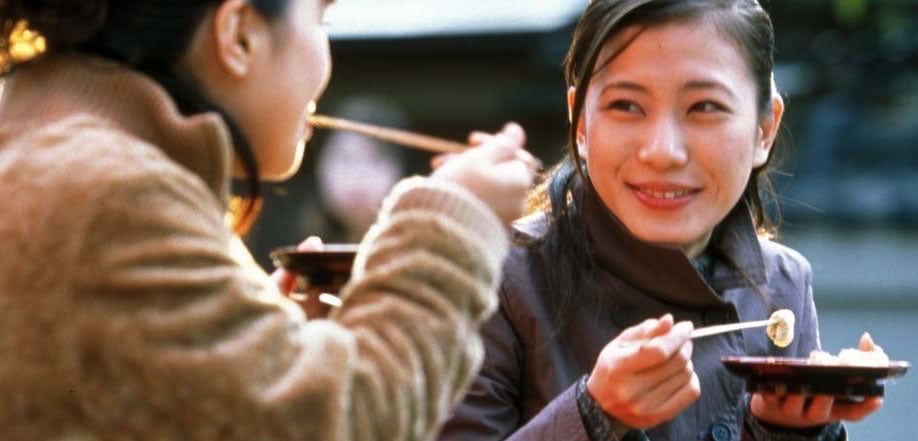A taste sensation
In Japanese cuisine, the visual impression is an important part of the experience and is an art form in its own right

While sushi and tempura might be as much a part of any keen foodie’s regular diet as, say, pizza or dim sum, there is considerably more to Japanese food than raw fish, rice and deep-fried vegetables, as a walk around any Japanese town will reveal. Okonomiyaki consists of savoury pancakes stuffed with vegetables, meat or seafood. Tonkatsu is a deep-fried pork cutlet, which turns into katsuda when rice and stock are added. And then there are the noodles – ramen, udon and soba are names to look out for. The choice can sometimes seem overwhelming.
Many of the smaller restaurants, especially in cities such as Tokyo, have one particular speciality. Conveyor-belt sushi bars are popular: sit at the counter, help yourself and pay at the end. There is usually a fixed price for each dish, typically round 100 yen. In some parts of the Japanese capital, restaurants selling the same type of food cluster together, as they do in Yakitori Alley, in the Ginza district, and Omoide Yokocho near Shinjuku station. In both areas, small restaurants, all selling skewers of grilled chicken known as yakitori, line both sides of the street. There’s nothing fancy here, but the atmosphere is lively and the beer is cold. Japan also has its own equivalent of the tapas bar: the izakaya. The name translates as a sake shop where you can sit and drink, although beer and cocktails are just as likely to be on the menu as sake, the traditional rice wine. Usually adorned with lanterns outside, izakaya are often traditional on the inside, too: don’t be surprised to be seated on a tatami mat at a low table. The food menu is designed for sharing – ideal if you want to try a small portion of something before deciding whether you like it.
Ordering food somewhere new can be nerve-racking, but when the menu is written in a different alphabet, the challenge of finding what you want can seem insurmountable. So an izakaya menu, often illustrated with vivid pictures of the food on offer, is a stress-free way of finding out in advance what you are likely to be eating.
Other restaurants advertise their menu in the form of plastic models of the food on display in the window or at the entrance to the establishment. Not that there is anything plastic about the presentation of a Japanese meal when it is brought to the table. Thin strips of courgette plaited to make a lattice container for a delicately flavoured fish; an aubergine carved to resemble a multi-petalled chrysanthemum; the skeleton of a fish used as the backdrop for an elegant display of sashimi slices: in Japanese cuisine, the visual impression is an important part of the culinary experience and is an art form.
In keeping with the modern enthusiasm for locally sourced food, Japan is a great place for regional specialities. Yudofu, or boiled tofu, is a popular winter dish in Kyoto, where temperatures can be harsh. The northern city of Sapporo – famous for a beer of the same name – is the home of ramen, a combination of noodles and broth served with different toppings. And in Osaka, the city known as the food capital of Japan, crunchy octopus dumplings known as takoyaki are a speciality.
If you want to get an idea of what’s on offer, head to the Dotonbori district, which has a bigger choice of restaurants than anywhere else in the city.
Cutting-edge cuisine
Some of Japan’s restaurants are among the most highly regarded in the world. Les Créations de Narisawa (0081 357 850 799;) is the Tokyo base of Yoshihiro Narisawa, whose training in France with Joël Robuchon and Paul Bocuse has influenced his style of cooking. His menus combine classic French dishes, Japanese-style presentation and seasonal ingredients, cooked with organic soil, charcoal and water, and the results have put his restaurant into the top 50 in the world.
Another popular Japanese chef is Seiji Yamamoto, whose Roppongibased restaurant Nihonryori RyuGin (0081 334 238 006;nihonryoriryugin. com) is also in the world’s top 50, and has two Michelin stars. His dishes are designed to show off the delicacy and seasonality of his ingredients in what can sometimes seem unusual combinations such as steamed egg custard with sea urchin.
Subscribe to Independent Premium to bookmark this article
Want to bookmark your favourite articles and stories to read or reference later? Start your Independent Premium subscription today.

Join our commenting forum
Join thought-provoking conversations, follow other Independent readers and see their replies